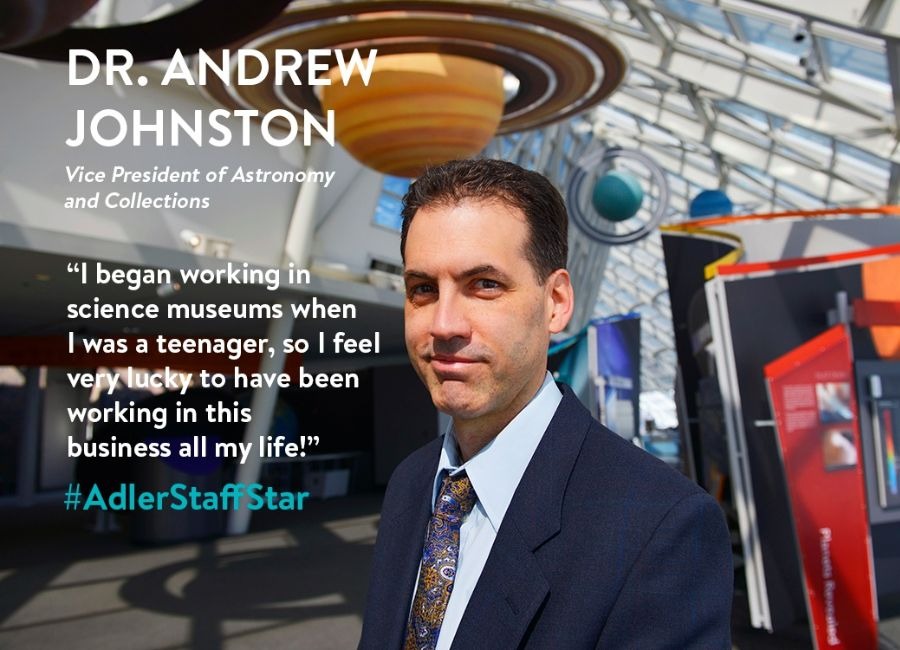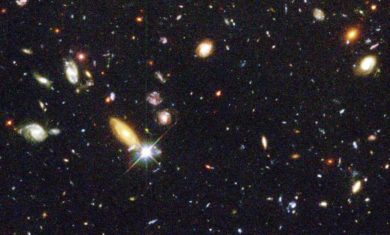Does The Multiverse Exist?

Header Image: Guests dressed up in costume at Adler After Dark: Go Boldy in 2016.
If you’re even a little bit into sci-fi, then there’s a good chance you’ve watched, read, or consumed SOMETHING that references multiverses.
In fact, multiverse theory has gained popularity as of late. From Marvel comics to Doctor Who to Rick and Morty—multiverses have taken over nerd culture.
But what IS a multiverse? And does it actually exist? Or is it just the latest sci-fi trope to gain popularity in mainstream media?
As Doctor Strange puts it, “What if the fabric of reality was but a single thread of something much larger?”
Well, currently multiverse theory is… just that, a theory. As it stands, the multiverse exists outside our current scientific understanding of reality. Theoretical physics suggests a multiverse is a hypothetical grouping of multiple universes. This means that our Universe could be just one tiny universe in a much larger multiverse where many, possibly even infinite universes, are contained.
Interestingly enough, even though much of multiverse theory is hypothetical or imagined, there is some scientific grounding to parts of it.
But where to begin?
First, not all scientists agree that the multiverse could exist—or that it’s worth exploring. Second, there are actually a few different theories, each which can help to explain certain anomalies in our universe. (But could also break some currently known things.)
Let’s focus on the eternal cosmic inflation theory. This theory starts with the Big Bang. It is suggested that as our universe expanded into existence, it started off rapidly, then slowed—like when you inflate a balloon. This rapid expansion created our universe, but also other universes in a vast bubble-like multiverse. While parts of the universe stopped the extremely rapid “inflationary” expansion and “budded off” to become normal space, large parts of the universe have continued to inflate even now. Those inflating portions keep spawning new bubble universes. It will never stop—with uncounted trillions of new universes budding off every second.
Some of the bubbles in the multiverse are still hot and expanding quickly, while others, like our own universe, have slowed and cooled to allow for the formation of stars, planets, galaxies, etc. The universal laws of physics that we know and understand in our own universe may not be applicable to other universes. It’s possible they would differ from bubble to bubble.
While scientists haven’t come up with any real tangible exercises to test this theory, for some, the uniformity of our universe may give hope to something beyond.
Cosmic microwave background radiation (CMBR), which is considered to be a remnant of the Big Bang, has been precisely measured across our known Universe. Two relevant observations can be made from these measurements:
1.) The striking uniformity in temperature measurements, which suggests that our known universe is the same temperature from one end to the other.
2.) Everywhere we look, the CMBR shows signs of tiny fluctuations. These fluctuations have the exact properties that we would expect from tiny fluctuations that got blown up by the rapid inflation.
While these things together don’t necessarily establish a multiverse, they certainly don’t rule it out either. But, of course, in the end, these and other theories challenge notions about our universe that we consider to be scientific and true. And we haven’t really “figured it out” yet. It’s possible we never will.
So, is the multiverse real? To quote the Doctor, “…this is one corner of one country, on one continent on one planet that’s a corner of a galaxy, that’s a corner of a universe, that is forever growing and shrinking and creating and destroying and never remaining the same for a single millisecond. And there is so much, so much to see.”
We’ll leave it up to you to decide.
Could There Be A Parallel Universe That Is A Nonstop Musical?
When the city of Chicago shut down in March 2020, a small group at The Adler Planetarium was given creative freedom to make something weird, something silly, something new for the historic Chicago museum! The Wow! Signal is the only space-science-musical, silent-film, animated, sentient-spaghetti-starring, lightly educational sketch show on the internet.
Following the adventures of Lucianne, Chris, and Meredith, our heroes search for the source of a mysterious signal after getting stuck inside the Adler Planetarium together. Each episode they explore space science topics like aliens, black holes, and zodiac constellations. During one of their adventures, they became trapped in a nonstop musical parallel universe full of Inflationary Theory quantum bubble universes, an animation detailing string theory, a ballad about the eventual heat death of the universe, and more. Can they escape this alternate universe and travel back home? Find out.







